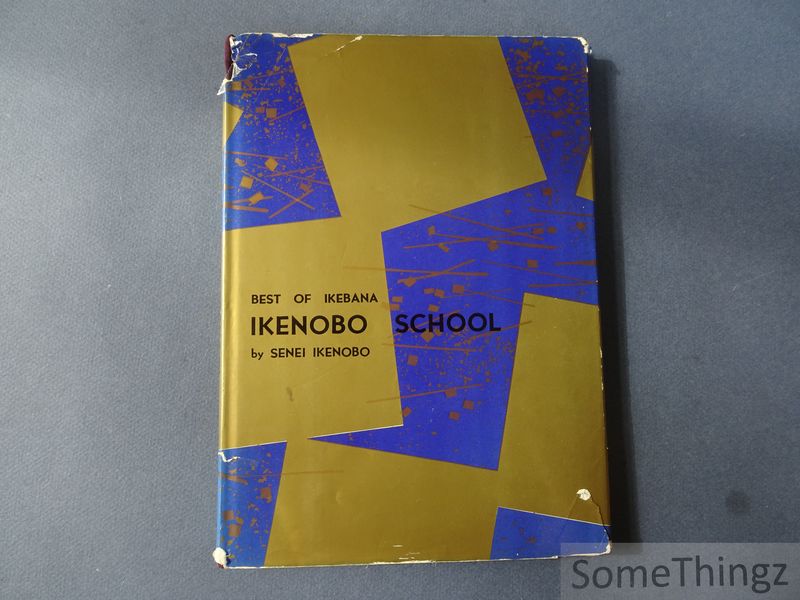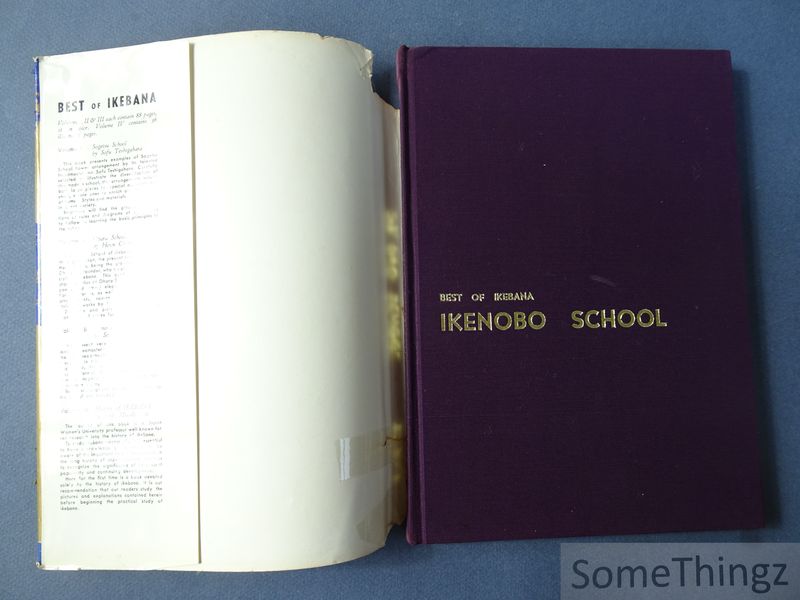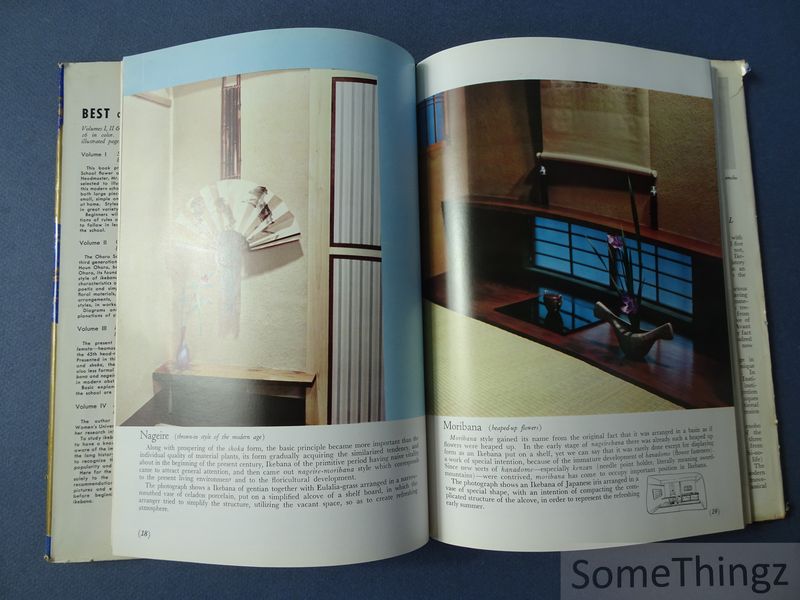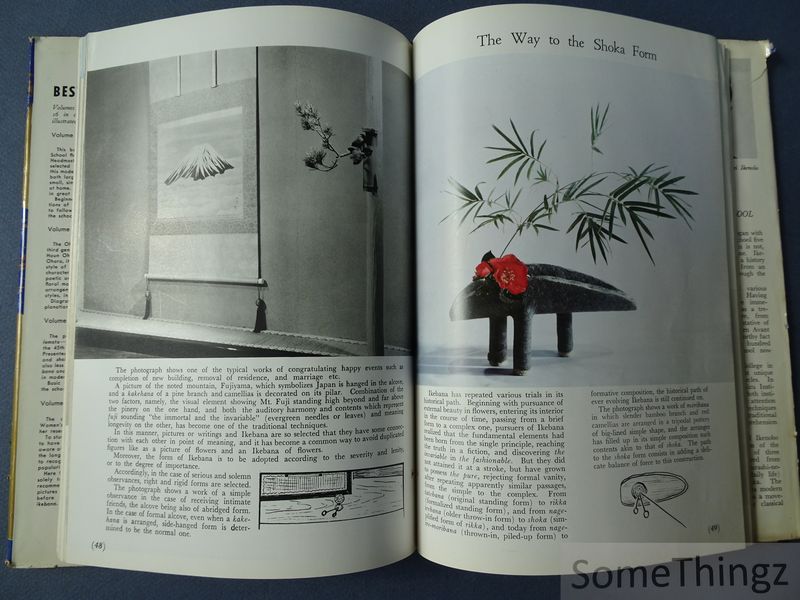BOOKS
Senei Ikenobo.
Best of Ikebana. Ikenobo School.
Tokyo, Shufunotomo Co, 1962.
Sold
Bound, purple cloth with orig. dustjacket, 88pp., 19x26.5cm., illustr. in col. and b/w., in acceptable condition (dustjacket damaged, binding with traces of moist, text and illustrtions in very good condition: see photo's).
"Best of Ikebana: Ikenobo School" by Senei Ikenobo is a richly illustrated volume that delves into the traditions and aesthetics of the Ikenobo school, the oldest and most revered school of ikebana in Japan. Published in 1962 as part of a four-volume box set by Shufunotomo Co. Ltd., this 90-page hardcover book offers an in-depth exploration of the Ikenobo school's philosophy, styles, and techniques. The book begins by tracing the origins of the Ikenobo school to the Rokkaku-d? Temple in Kyoto, where floral offerings were made by Buddhist priests as early as the 15th century. It highlights how the school's name, "Ikenobo," derives from the combination of "ike" (pond) and "bo" (priest's hut), reflecting its humble beginnings near a pond adjacent to the temple.?Central to the Ikenobo school's teachings are the Rikka and Shoka styles. Rikka, meaning "standing flowers," is a formal and complex style that symbolizes the beauty of natural landscapes. It employs multiple branches and flowers to represent elements such as mountains, waterfalls, and valleys. Shoka, on the other hand, is a more simplified style that emphasizes the essence and natural growth of the plant, focusing on three main elements: shin (heaven), soe (man), and tai (earth).? The book showcases numerous arrangements through high-quality photographs and diagrams, illustrating the meticulous attention to line, balance, and harmony that characterizes Ikenobo ikebana. Each arrangement is accompanied by explanations that delve into the choice of materials, the symbolism behind the composition, and the intended emotional impact.? Throughout the volume, Senei Ikenobo emphasizes the spiritual and philosophical aspects of ikebana, viewing it not merely as an art form but as a path to personal growth and harmony with nature. He discusses how the practice of arranging flowers can lead to a deeper appreciation of the seasons, the impermanence of life, and the interconnectedness of all things.? "Best of Ikebana: Ikenobo School" serves as both an instructional guide and a source of inspiration for practitioners and admirers of ikebana. Its comprehensive coverage of the Ikenobo school's history, principles, and artistic achievements makes it an invaluable resource for understanding the depth and beauty of this traditional Japanese art.







